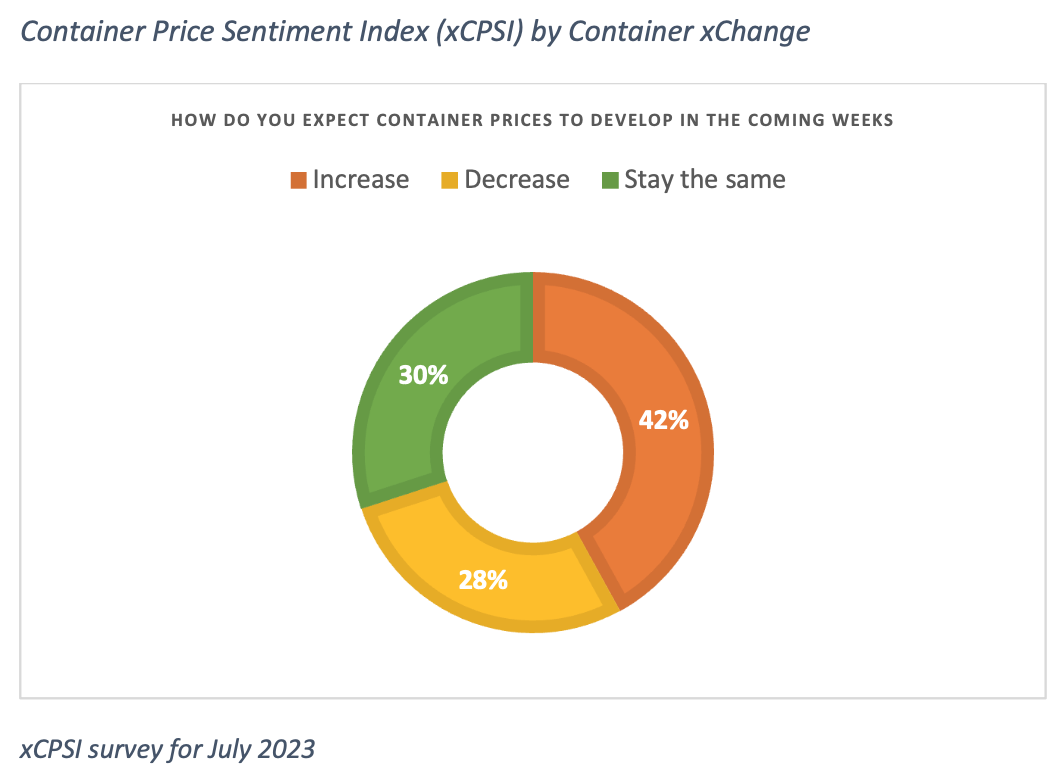Retailers on track to enjoy “a shipper’s market” this peak season
Container prices stabilized in July after volatile jumps in May and June, Container xChange study says.

Companies that move their goods via containers are on track to enjoy “a shipper’s market” this peak season as container rates stabilized to a plateau in July after a series of volatile jumps in May and June, according to the “August Container Market Forecaster” report from Container xChange.
Despite ongoing market fluctuations, the firm’s Container Price Sentiment Index (xCPSI) exhibited resilience in July as compared to the month of June, the Hamburg-based online container logistics platform said. That growth in sentiment underscores the industry's anticipation of an imminent turnaround, contributing a sense of positivity to the landscape, Container xChange said.
The firm says its xCPSI measurement distills a monthly survey of 2,570 supply chain professionals into a quantitative measure providing insight into near-future expectations for the container market dynamics
The July report showed that most respondents (42%) foresee an increase in container prices in the near-term which is indicative of potential market improvement, 28% foresee a further decline in container prices, suggesting a certain degree of pessimism in market conditions, and 30% of those surveyed maintained that prices would remain unchanged.
"As economists shift from predicting recession to a 'soft landing,’ the industry holds its momentum. While some experts remain cautious, the foundation of a resilient economy, sustained consumer activity, and strategic federal investments improves the outlook of the upcoming holiday season," Christian Roeloffs, cofounder and CEO of Container xChange, said in a release. “It’s a shipper’s market this peak season as rates stabilize at below pre-COVID levels and capacity is abundant. Prices are low and this offers a great opportunity for exporters this peak season.”
While North America has posted encouraging signs—such as rising imports, falling inflation, and stabilizing inventories—Europe has had tougher conditions, the report found.
“Although we did avoid a technical recession in the Eurozone, retail trade is down by 0.3%, along with high inflation rate. These high prices will continue to exert pressure on operating costs for shipping companies. Carriers and freight forwarders should anticipate rising expenses related to provisioning ships and providing for crew members. Shippers might also experience increased costs for transporting goods, affecting overall supply chain costs,” Roeloffs said.
Related Articles
Copyright ©2024. All Rights ReservedDesign, CMS, Hosting & Web Development :: ePublishing